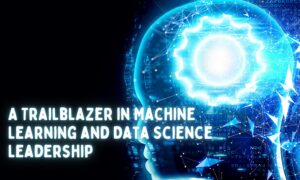Accurate crop yield prediction is crucial for ensuring food security, optimizing agricultural practices, and informing policy decisions. Traditional methods for predicting crop yields often rely on statistical models and expert knowledge, which can be limited in their accuracy and scalability. Machine learning (ML) has emerged as a powerful tool for crop yield prediction, offering the ability to learn complex relationships from large datasets and provide more accurate and timely predictions.
Sairone, an AI-powered platform developed by Saiwa, is designed for agricultural applications and integrates seamlessly with drone technology.
By providing insights on crop detection, invasive species identification, and nitrogen content analysis, it enhances machine learning models, thereby improving the accuracy of crop yield prediction and optimizing agricultural processes.
This article explores the application of machine learning to crop yield prediction, discussing the factors affecting yield, challenges with traditional methods, various ML approaches, and future trends in this field.
Understanding Crop Yield Prediction
Crop yield prediction involves estimating the quantity of a specific crop that will be harvested from a given area of land. Accurate predictions are vital for various stakeholders, including farmers, agricultural businesses, policymakers, and humanitarian organizations. These predictions inform decisions related to resource allocation, crop management, pricing strategies, and food security planning.
Factors Affecting Crop Yield:
Numerous factors influence crop yield, including:
- Environmental Factors: Weather conditions (temperature, rainfall, sunlight), soil properties (nutrient content, moisture), and pest and disease prevalence significantly impact crop growth and yield.
- Management Practices: Irrigation methods, fertilization strategies, planting density, and pest control measures play a crucial role in determining yield.
- Genetic Factors: The genetic makeup of the crop variety influences its potential yield and resilience to various environmental stressors.
- Socioeconomic Factors: Access to resources, technology, and market information can also affect crop yield, particularly in developing countries.
Challenges in Traditional Methods:
Traditional crop yield prediction methods often rely on statistical models based on historical yield data and expert knowledge. These methods face several limitations:
- Limited Accuracy: Statistical models may not capture the complex non-linear relationships between various factors and crop yield.
- Lack of Scalability: Traditional methods can be difficult to scale to large datasets and diverse geographical regions.
- Data Dependency: The accuracy of statistical models depends heavily on the quality and availability of historical data.
- Inability to Incorporate Real-Time Data: Traditional methods often struggle to incorporate real-time data from sensors and other sources, limiting their ability to adapt to changing conditions.
Machine Learning Approaches for Crop Yield Prediction
Machine learning a key component of AI used in agriculture offers a more data-driven and adaptable approach to crop yield prediction. ML algorithms can learn complex relationships from large datasets, incorporating various factors influencing yield and providing more accurate and timely predictions. Key steps in applying ML to crop yield prediction include:
- Data Collection: Gathering data on relevant factors, including historical yield data, weather data, soil data, and management practices.
- Data Preprocessing: Cleaning and preparing the data for use in ML models, including handling missing values, converting data types, and scaling features.
- Feature Engineering: Selecting and transforming relevant features to improve the performance of ML models.
- Model Selection: Choosing an appropriate ML model based on the characteristics of the data and the prediction task.
- Model Training: Training the selected ML model on the prepared data.
Machine Learning Models for Crop Yield Prediction
Several ML models have been successfully applied to crop yield prediction:
1- Linear Regression Models
Simple and interpretable models suitable for datasets with linear relationships between features and yield. They provide a good baseline for comparison with more complex models and are easy to implement and understand. However, their performance can be limited when relationships are non-linear.
2- Decision Trees and Random Forests
Can capture non-linear relationships and handle categorical data effectively. Random Forests, an ensemble method, often provides higher accuracy than individual decision trees by combining predictions from multiple trees. They are relatively easy to interpret and less prone to overfitting.
3- Support Vector Machines (SVM)
Effective for high-dimensional datasets and complex relationships, but can be computationally intensive, especially with large datasets. SVMs are particularly useful when dealing with datasets with a clear margin of separation between classes. Kernel methods allow SVMs to handle non-linear relationships.
4- Neural Networks and Deep Learning
Powerful models capable of learning highly complex patterns from large datasets, but require significant computational resources and careful tuning of hyperparameters. Convolutional Neural Networks (CNNs) are particularly useful for analyzing image data, such as satellite imagery, for identifying spatial patterns related to crop health and yield.
5- Ensemble Learning Models
Combining multiple ML models (like those above) to improve prediction accuracy and robustness. Methods like stacking (combining predictions using a meta-learner) and bagging (averaging predictions from multiple models trained on different subsets of the data) can leverage the strengths of different models to achieve better overall performance and reduce the risk of overfitting.
Future Trends and Developments
1- Advancements in AI and ML for Agriculture
Ongoing research in AI and ML is leading to the development of more sophisticated models and techniques for crop yield prediction. This includes exploring new deep learning architectures, developing more robust feature engineering methods, and incorporating domain-specific knowledge into ML models.
2- Integration of ML with IoT and Big Data
The increasing availability of data from IoT devices, such as weather sensors, soil sensors, and drones, provides new opportunities for improving crop yield prediction. Integrating ML with IoT and big data analytics platforms allows for real-time monitoring of crop conditions and more accurate and timely predictions.
Conclusion
Machine learning has emerged as a transformative tool for crop yield prediction, offering the potential to improve agricultural practices, enhance food security, and inform policy decisions. By leveraging the power of ML algorithms, we can analyze large datasets, incorporate diverse factors, and provide more accurate and timely predictions than traditional methods. Continued advancements in AI, ML, and data acquisition technologies will further enhance the capabilities of crop yield prediction and contribute to a more sustainable and efficient agricultural system.



































